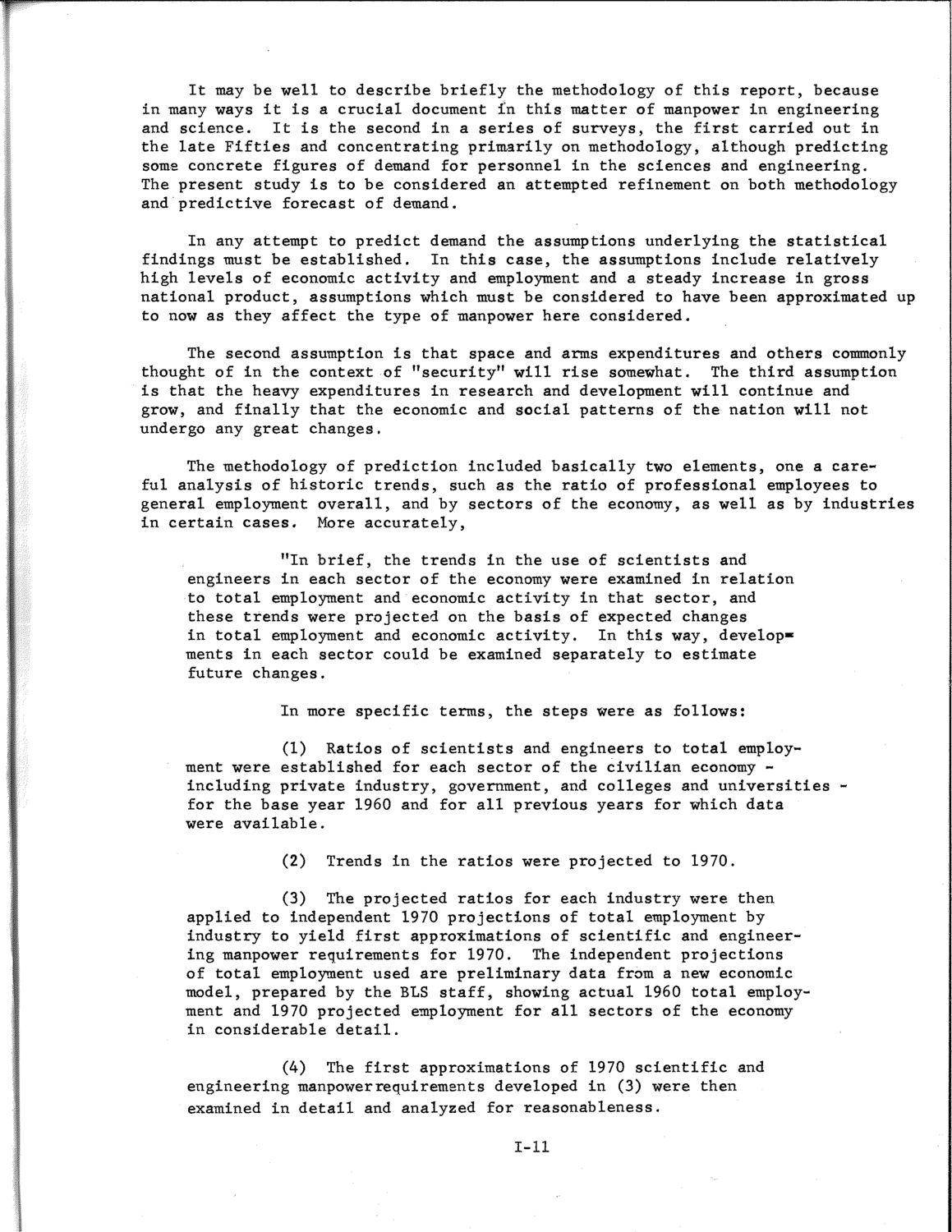| |
| |
Caption: SWE - Proceedings of the First International Conference of Women Engineers and Scientists
This is a reduced-resolution page image for fast online browsing.

EXTRACTED TEXT FROM PAGE:
It may be well to describe briefly the methodology of this report, because in many ways it is a crucial document in this matter of manpower in engineering and science. It is the second in a series of surveys, the first carried out in the late Fifties and concentrating primarily on methodology, although predicting some concrete figures of demand for personnel in the sciences and engineering. The present study is to be considered an attempted refinement on both methodology and predictive forecast of demand. In any attempt to predict demand the assumptions underlying the statistical findings must be established. In this case, the assumptions include relatively high levels of economic activity and employment and a steady increase in gross national product, assumptions which must be considered to have been approximated up to now as they affect the type of manpower here considered. The second assumption is that space and arms expenditures and others commonly thought of in the context of "security" will rise somewhat. The third assumption is that the heavy expenditures in research and development will continue and grow, and finally that the economic and social patterns of the nation will not undergo any great changes. The methodology of prediction included basically two elements, one a careful analysis of historic trends, such as the ratio of professional employees to general employment overall, and by sectors of the economy, as well as by industries in certain cases. More accurately, "In brief, the trends in the use of scientists and engineers in each sector of the economy were examined in relation to total employment and economic activity in that sector, and these trends were projected on the basis of expected changes in total employment and economic activity. In this way, develop" ments in each sector could be examined separately to estimate future changes. In more specific terms, the steps were as follows: (1) Ratios of scientists and engineers to total employment were established for each sector of the civilian economy including private industry, government, and colleges and universities for the base year 1960 and for all previous years for which data were available. (2) Trends in the ratios were projected to 1970. (3) The projected ratios for each industry were then applied to independent 1970 projections of total employment by industry to yield first approximations of scientific and engineering manpower requirements for 1970. The independent projections of total employment used are preliminary data from a new economic model, prepared by the BLS staff, showing actual 1960 total employment and 1970 projected employment for all sectors of the economy in considerable detail. (4) The first approximations of 1970 scientific and engineering manpowerrequirements developed in (3) were then examined in detail and analyzed for reasonableness. 1-11
| |